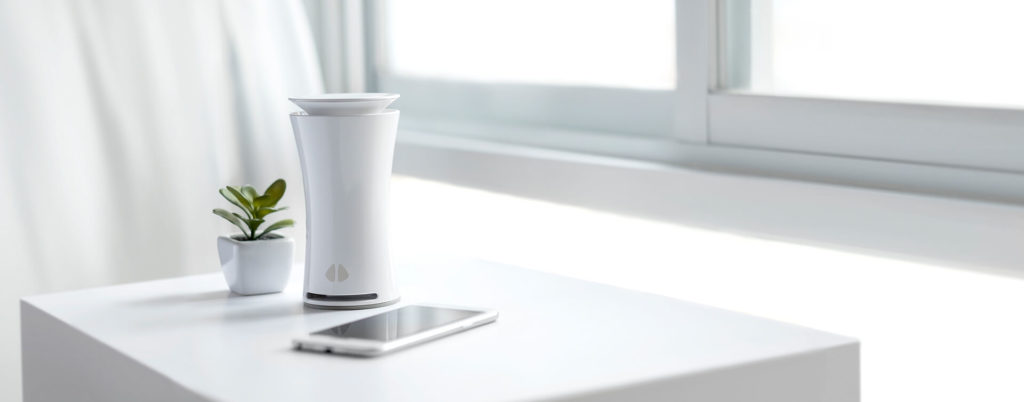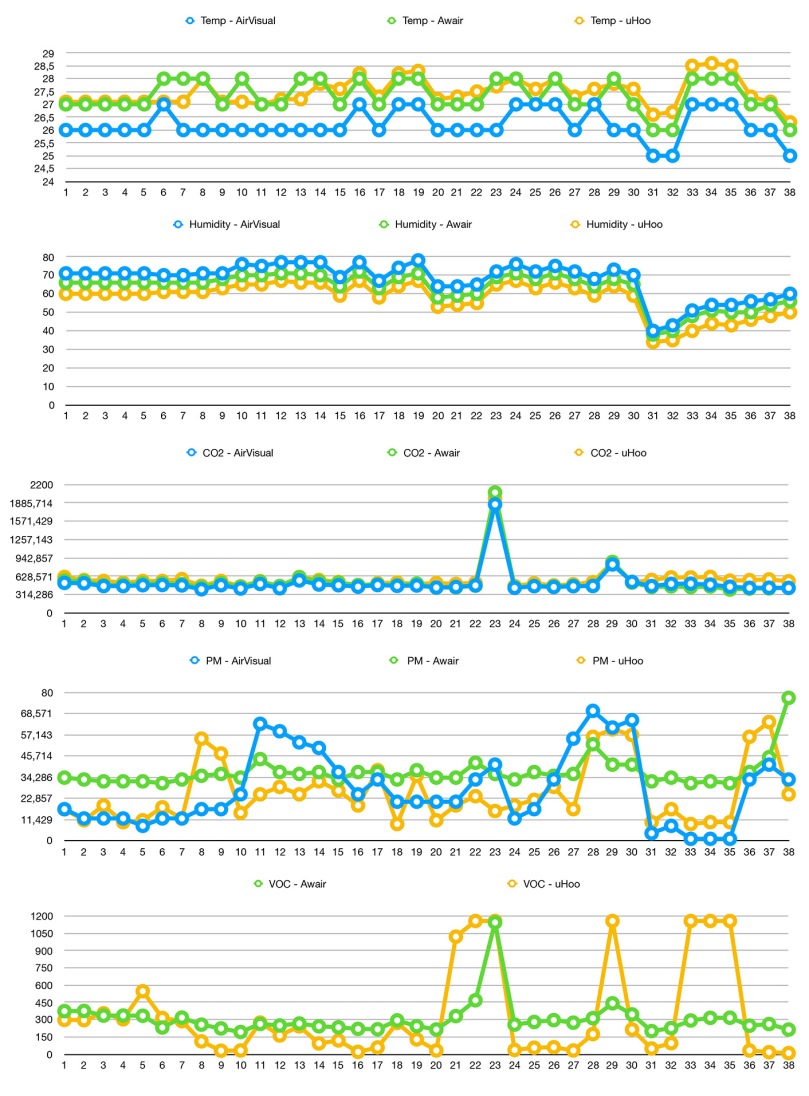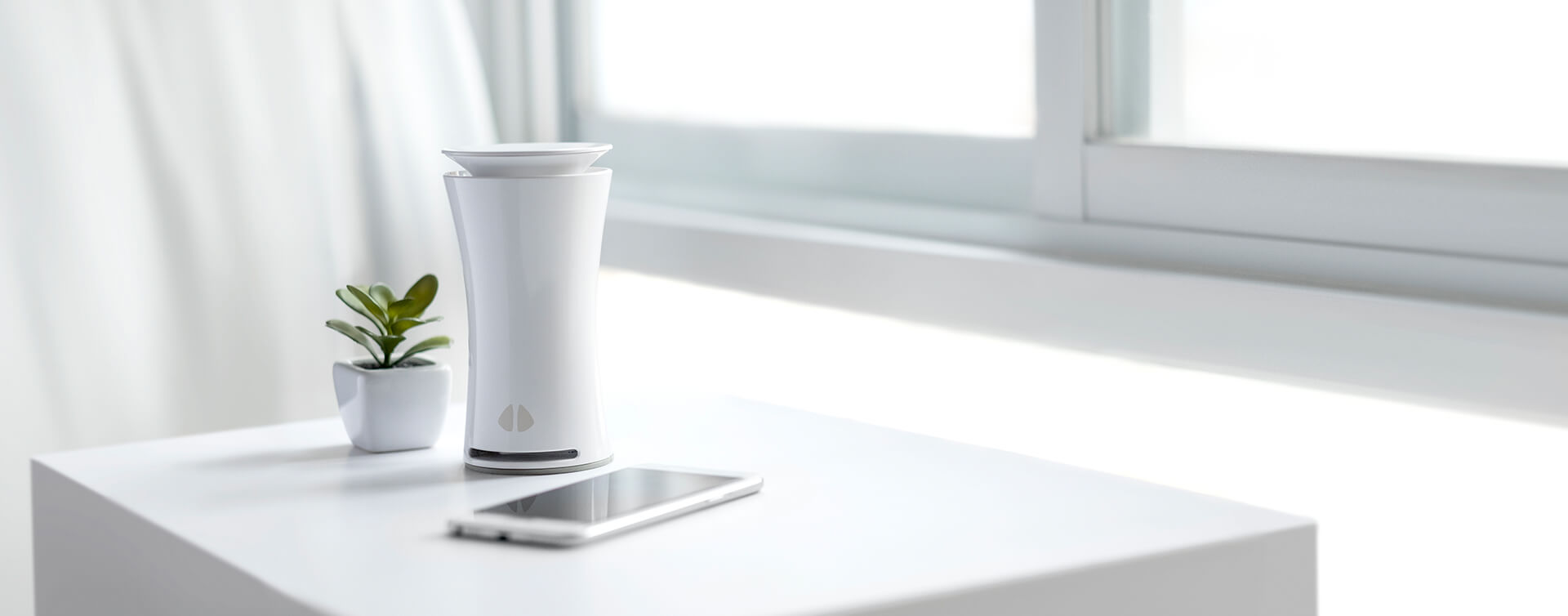
Air quality is an extremely important component of your everyday life. The only real way to measure this unseen aspect of your home is through the use of an air quality sensor.
Smart Addition to Your Home
Air quality sensors are devices with an array of advanced sensors that can measure the pollution in the air you breathe. They are designed to work around the clock and alert you when things aren’t quite on the level, helping you make the right choices and take the proper actions to protect yourself and your family.
Not All Air Monitors are Created Equal
There are many air quality monitors available on the market today. The relevance of the data you get from them can vary greatly. On top of that, not all of them have the same features or have the same quality of sensors.
Let’s take a comparative look at eight of the big indoor air sensors on the market, and see how they stack up:
1. uHoo

- Sensors
- uHoo has 9 dedicated indoor air quality sensors:
- temperature
- humidity
- carbon dioxide (CO2)
- total volatile organic compounds (tVOC)
- dust (PM2.5)
- carbon monoxide
- ozone
- nitrogen dioxide
- air pressure
- uHoo has 9 dedicated indoor air quality sensors:
- Portability
- With its size about as big as a Starbucks Venti cup, uHoo can be easily transported from one area of the house to another. You could also travel with it, as long as the area has a power outlet and a reliable WiFi connection for the unit to connect to, your uHoo should be able to work anywhere.
- Integrations
- uHoo is IFTTT and Alexa compatible.
- Apps
- Data is accessed through an app that is available on both the App Store (iOS) and PlayStore (Android).
- Connectivity
- The unit connects to the WiFi.
- LED Indicator / Display
- uHoo has an LED indicator that lights up during setup.
- API
- Available for enterprise accounts.
2. Awair

- Sensors
- Awair has six sensors:
- temperature
- humidity
- carbon dioxide
- VOCs
- dust (PM2.5 and PM10)
- Awair has six sensors:
- Portability
- The unit is not portable.
- Integrations
- Awair is IFTTT, Nest, and Amazon Echo compatible.
- Apps
- Data is accessed through an app that is available on both the App Store (iOS) and PlayStore (Android).
- Connectivity
- The unit connects to the WiFi and Bluetooth.
- LED Indicator / Display
- Awair has an LED indicator that displays three colors.
- API
- API is available.
3. Foobot

- Sensors
- Similar to Awair, Foobot measures temperature, humidity, VOCs, and dust. It estimates carbon dioxide and carbon monoxide from its VOC reading.
- Portability
- The unit is not portable.
- Integrations
- Foobot is IFTTT and Alexa compatible.
- Apps
- Data is accessed through an app that is available on both the App Store (iOS) and PlayStore (Android).
- Connectivity
- The unit connects to the WiFi.
- LED Indicator / Display
- Footbot displays three colors to indicate air quality status.
- API
- API is available.

Chart that compares all available air quality sensors in the market
What to Look for in an Air Quality Sensor
When it comes down to it, the important things to look at are the kinds of pollutants the monitors can pick up. The big three pollutants everyone needs to look out for are Volatile Organic Compounds (VOCs), Particulate Matter (PM2.5 and PM10) and Carbon Dioxide (CO2). These three are the most common compounds which affect your quality of life and should be a mandatory check.
As you can see from the chart, most of the air sensors measure these in one way or another, but only four products look at the big three: uHoo, Awair, Foobot and Air Mentor Pro.
Estimated Values aren’t Good Enough
But this is the problem with looking at budget monitors: Foobot, for instance, doesn’t have an actual CO2 sensor, and only estimates it based on the VOC sensor readings.
The Problem with Dust Sensors
Some companies don’t distinguish between PM2.5 and PM10, and just mention the word “dust” on their specification sheet as a catchall. Being able to monitor PM2.5 is more important, as these finer particles are smaller and more likely to stay airborne for long periods of time, entering your respiratory tract to cause infections and other problems.
What’s the Best Sensor available in the market today?
From the list of air quality sensors, uHoo is the only sensor that checks on the big three, and has five additional sensors to check temperature, humidity and three other dangerous pollutants that can cause permanent damage or even death: carbon monoxide (the silent killer), nitrogen dioxide (which forms into ozone), ozone (which at ground level can cause permanent respiratory damage).

uHoo vs AirVisual vs Awair by SeeTheAir
Having more sensors is great, and lastly, you’ll also want to look at a few other criteria like portability, so that it’s easier to place the sensor in areas in your home that need it, and have it blend into the furniture in an aesthetic fashion. You’ll also want integration with your other tech gadgets like your smartphone and smart speakers so that it can provide reports and alerts easily and seamlessly.
Additional Reading: This comparative article by SeeTheAir is very insightful if you prefer to read a 3rd party’s perspective.







